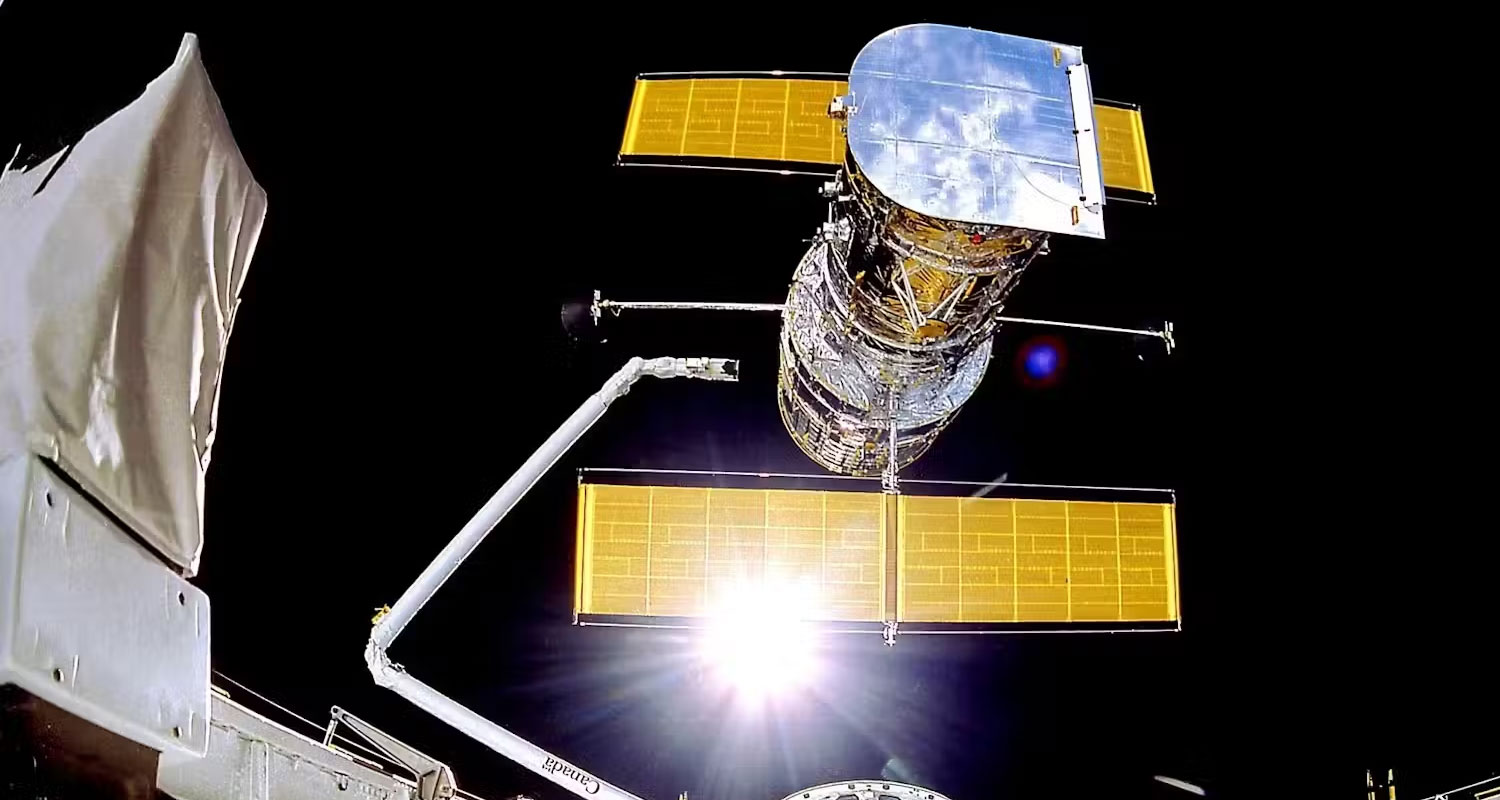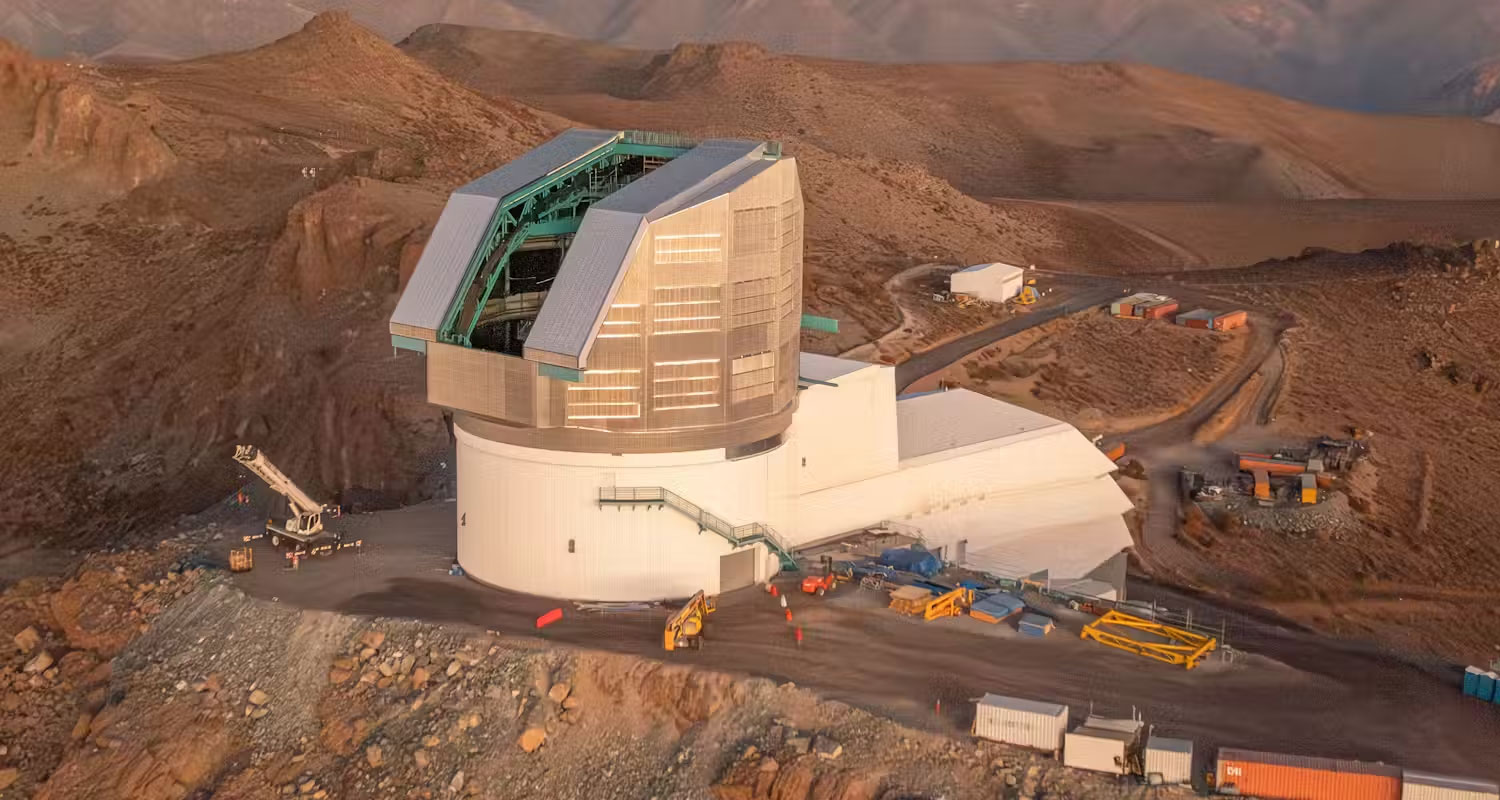In current a long time, we’ve learnt big quantities concerning the universe and its historical past. The quickly creating know-how of telescopes – each on Earth and in house – has been a key a part of this course of, and people which can be attributable to begin working over the subsequent 20 years ought to push the boundaries of our understanding of cosmology a lot additional.
All observatories have an inventory of science aims earlier than they swap on, however it’s their sudden discoveries that may have the most important affect. Many shock advances in cosmology had been pushed by new know-how, and the subsequent telescopes have highly effective capabilities.
Nonetheless, there are gaps, equivalent to an absence of upcoming house telescopes for ultraviolet and visible-light astronomy. Politics and nationwide pursuits have slowed scientific progress. Monetary belts are tightening at even essentially the most well-known observatories.
The most important new telescopes are being constructed within the mountains of Chile. The Extraordinarily Massive Telescope (ELT) will home a mirror the dimensions of 4 tennis courts, underneath an enormous dome within the Atacama Desert.
Reflecting telescopes like ELT work through the use of a main mirror to gather gentle from the night time sky, then reflecting it off different mirrors to a digicam. Bigger mirrors acquire extra gentle and see fainter objects.
One other ground-based telescope underneath development in Chile is the Vera C Rubin telescope. Rubin’s digicam is the largest ever constructed: the measurement of a small automotive and weighing about 3t. Its 3 200 megapixels will {photograph} the entire sky each three days to identify transferring objects. Over the course of 10 years, these pictures will probably be mixed to kind a large timelapse video of the universe.
Astronomy was a bodily demanding job, requiring journey to distant telescopes in darkish websites –- however many astronomers started working from house lengthy earlier than Covid. Within the late twentieth century, main floor observatories began to place in place know-how to permit astronomers to manage telescopes for observations at night time, even once they weren’t there in particular person. Distant observing is now commonplace, carried out by way of the web.
Anticipate the sudden
The view of any telescope on the bottom is proscribed, although, even when it’s on prime of a mountain. Launching telescopes into house can get round these limitations.
The Hubble House Telescope’s operational historical past started when the house shuttle lifted it above the environment on 25 April 1990. Hubble obtained the total Nineteen Sixties sci-fi remedy: a rocket to launch it, gyroscopes to level it and digital cameras as an alternative of photographic movie. However one plan fell by means of: for Hubble to host a commuting astronaut-astronomer, working decidedly away from house.
Learn: Canada to speculate R3.7-billion in SKA telescope undertaking
Hubble was designed to take a census of the Milky Manner and its neighbouring galaxies. Its successor, the James Webb House Telescope, would examine much more distant galaxies.
Each telescopes have revolutionised our understanding of the universe, however in methods no one foresaw. Hubble’s unique plans point out not one of the discoveries now seen as its biggest hits: plumes of water erupting from Jupiter’s moon Europa, the vortex round black holes, invisible darkish matter that holds the universe collectively and the darkish vitality that’s pulling it aside.
Webb, launched on 25 December 2021, now spends a third of its time planets round different stars that weren’t even recognized about when it was designed.
The acknowledged purpose of an costly telescope is normally only a gross sales pitch to house companies, governments and – shhh… — taxpayers. The Webb telescope ought to obtain its unique science objectives, however astronomers have at all times recognized that seeing additional, finer or in additional colors can obtain a lot extra. The sudden discoveries by telescopes are sometimes extra vital than the science aims acknowledged on the outset.
Taking the lengthy view
For scientists, it’s a aid that telescopes transcend their transient, as a result of Hubble and Webb each took greater than 25 years from serviette to launch. In that point, new scientific questions come up.
Constructing a big house telescope usually takes about 20 years. The Chandra and XMM-Newton house telescopes took 23 years and 15 years to construct, respectively. They had been designed to look at x-rays coming from sizzling gasoline round black holes and galaxy clusters, and had been launched very shut collectively in 1999.
They had been adopted by Japan’s Hitomi X-ray satellite tv for pc, which took 18 years to construct, and the German eRosita instrument on Russia’s Spektr-RG house observatory, which took 20 years.
Learn: Webb telescope captures ‘gorgeous’ photos of 19 spiral galaxies
Comparable timescales apply to the European House Company’s Hipparcos and Gaia house telescopes, which have mapped all the celebrities within the Milky Manner. The Cobe and Planck missions to check the microwave-light afterglow of the Large Bang additionally took 20 years. Exact dates rely the way you depend, and some exceptions have been “quicker, higher, cheaper”, however nationwide house companies are usually threat averse and sluggish when creating these tasks.

The most recent house telescopes are subsequently millennials. They had been designed at a time when astronomers had measured the universe’s new child enlargement following the Large Bang, and likewise its old-age, accelerating enlargement. Their principal purpose now’s to fill the hole –- as a result of, surprisingly, interpolations from early instances to late instances don’t meet within the center.
The measured charges for the enlargement of the universe are inconsistent, as are outcomes for the clumpiness of matter within the cosmos. Each measurements create challenges for our theories of how the universe developed.
Observing the center age of the universe requires telescopes working at lengthy wavelengths, as a result of gentle from distant galaxies is stretched by the point it reaches us. So, Webb has infrared zoom cameras, whereas the European House Company’s Euclid house telescope, launched in 2023, and Nasa’s Nancy Grace Roman telescope, which is about to launch in 2026, each have infrared wide-angle views.
Three buses come alongside directly
Most stars shine in ultraviolet and infrared colors which can be blocked by the Earth’s environment, in addition to the colors our eyes developed to see.
Further colors are helpful. For instance, we are able to weigh stars on the opposite facet of our galaxy as a result of huge stars are shiny in infrared, whereas smaller ones are faint – and so they keep that means all through their lifetimes. Nonetheless, we all know the place stars are being born as a result of solely younger stars emit ultraviolet gentle.
As well as, impartial measurements of the identical factor are very important for rigorous science. Infrared telescopes, for instance, can work collectively and have already made shocking discoveries. But it surely’s not nice for range that the Webb, Euclid and Roman house telescopes all see infrared colors.
Learn: The South African telescope that remodeled our understanding of the cosmos
Hubble’s seen gentle digicam has simply been switched off attributable to finances cuts. Nasa is not going to swing again to ultraviolet wavelengths till the 2030s, with the Ultraviolet Explorer and Liveable Worlds Observatory.
Earthly politics will get in the way in which, too. Knowledge from China’s Hubble-class house telescope, Xuntian, is unlikely to be shared internationally. And in protest at Russia’s invasion of Ukraine, in February 2022 Germany switched off its eRosita x-ray instrument that had been working completely, in collaboration with Russia, 1,000,000 miles from Earth.

Low-cost business launches might save the day. Euclid was to have lifted off on a Russian Soyuz rocket from a European House Company spaceport in French Guiana. When Russia ended operations there in tit-for-tat reprisals, Euclid’s launch was efficiently switched on the final minute to a SpaceX Falcon 9 rocket.
If giant telescopes can be folded inside shoebox-size “cubesat” satellites, the decrease value would make it viable for them to fail. Tolerating threat creates a virtuous circle that makes missions even cheaper.
Telescopes are additionally being tried in modern places equivalent to big helium balloons and aeroplanes. Sooner or later, they may even be deployed on the moon, the place the setting is advantageous for sure kinds of astronomy.
However maybe essentially the most uncommon telescope know-how, which can deliver essentially the most sudden discoveries, is gravitational wave detectors. Gravitational waves will not be a part of the electromagnetic spectrum, so we are able to’t see them. They’re distortions, or “ripples”, in spacetime brought on by among the most violent and energetic processes within the universe. These would possibly embody a collision between two neutron stars (dense objects shaped when huge stars run out of gas), or a neutron star merging with a black gap.

If telescopes are our eyes, gravitational wave detectors are our ears. However once more, present gravitational wave detectors on Earth are mere dry runs for those astronomers will finally deploy in house.
Requested what the subsequent technology of observatories will uncover, I don’t know. And that’s factor. One of the best science experiments shouldn’t simply inform us concerning the issues we anticipate finding, but additionally concerning the unknown unknowns.![]()
Primary picture: Taken on 3 April 2024, the picture reveals progress on ESO’s Extraordinarily Massive Telescope (ELT). The large construction is 80m excessive and 88m large and can shield the world’s greatest eye on the sky from the intense setting of Chile’s Atacama Desert. Picture: B Häußler/ESO
Get breaking information from TechCentral on WhatsApp. Join right here.
- The creator, Richard Massey, is professor of extragalactic astrophysics (darkish matter and cosmology), Durham College
- This text is republished from The Dialog underneath a Artistic Commons licence